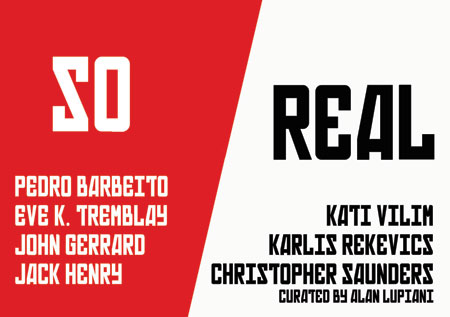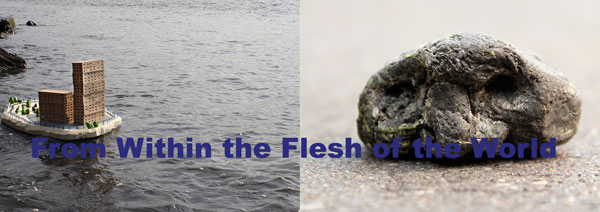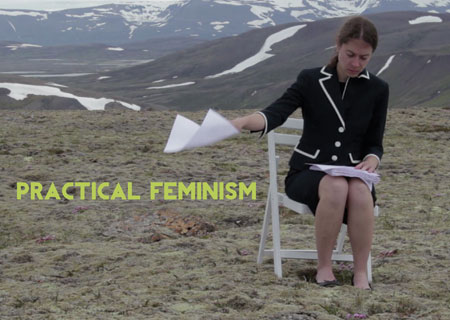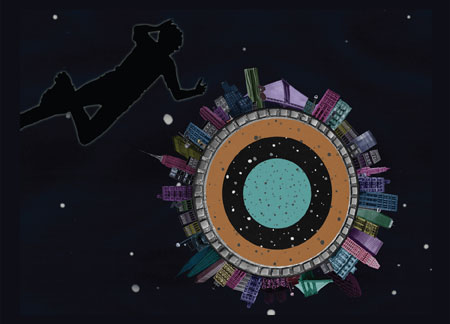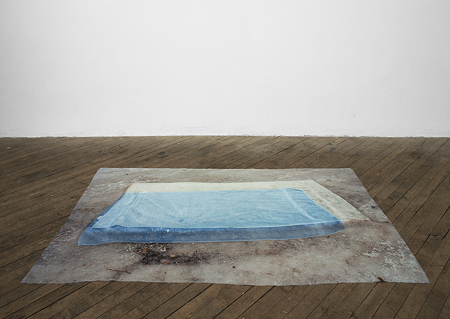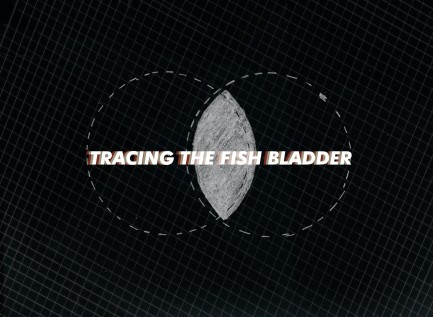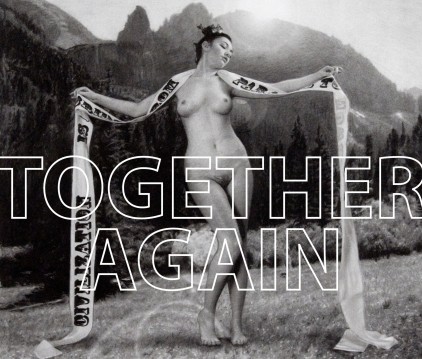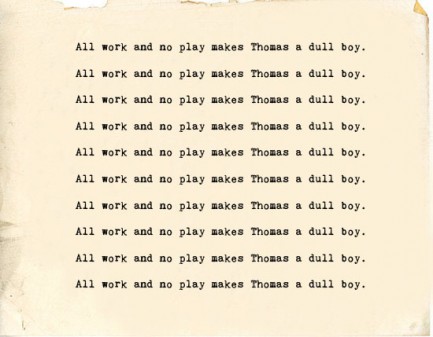Adam Frelin and Rena Leinberger
Curated by Eileen Jeng October 25 – December 13, 2014
Opening Reception: Saturday, October 25, 6-9 pm
Radiator Gallery is pleased to announce an exhibition of recent photographs, sculptures, and videos by Adam Frelin and Rena Leinberger. By re-creating, displacing, and transforming seemingly familiar images, objects, sites, and actions, the artists construct distinctive narratives as well as explore the role of the mediums. With their formal qualities, these works subvert art historical conventions as well as cultural and societal expectations. The works conflate fact and fiction, past and present, and the natural and man- made environment. The title of the exhibition, From Within the Flesh of the World, is taken from Victor Burgin’s essay, “Monument and Melancholia” (2008).
nstalled on a diagonal in the back of the main gallery is Frelin’s outdoor sculpture Drifter, a tapered 14- foot long unsealed wood cylinder coated with layers of dirt at the bottom. Having first been situated in a cemetery, the sculpture – symbolic of a safety coffin’s cylinder from the 18th century – has absorbed its surrounding environment. It bridges the uncanny divide between the living and deceased as well as reality and fiction.
Kodamazothgolemnkiski consists of a series of close up photographs of anthropomorphic, totemic sculptures of blackened gum that Frelin scraped off the sidewalks of New York. At a distance, these objects resemble primitive prehistoric figures. The video Firefall is a re-creation of an epic event that took place in Yosemite National Park until the 1960s, where hot embers were shoveled over a cliff, resembling a vivid red waterfall.
Leinberger focuses on the intrigue of the spectacle in relation to constructed and demolished environments in her work. Her Zero Panorama series was inspired by an image she found while searching for historical explosions on the Internet – one of naval officers and one of the wives cutting into a cake to celebrate a nuclear testing site – which was deemed obscene by The Washington Post. Leinberger’s black and white photographs are of re-creations of iconic images, such as the historical explosions of Nagasaki and the Challenger, but in cake frosting. The artist explores the “seduction of the spectacle” of both of the explosion and frosting as well as the dichotomy between the rational and absurd.
In Utopias, Unmoored, Leinberger creates a series of photographs and videos of small-scale islands of urban settings constructed out of unstable and inexpensive materials – foam, colored paper, wood pieces – in the water. Leinberger obscures referential details of location. She examines the relationship between architecture, landscape, and societal interventions as well as failure theory in building materials.
About the Artists
Adam Frelin’s work has been exhibited in solo shows at the Bemis Center for Contemporary Art, Omaha; Las Cruces Museum of Fine Art; Contemporary Art Museum St. Louis; and Carnegie Mellon University, Pittsburgh. Recent group shows have been held at Sculpture Center, Cleveland; Aldrich Contemporary Art Museum, Ridgefield; Columbus Museum; Los Angeles County Museum of Art; and part of a screening at the Getty Research Institute, Los Angeles. Frelin has published two photography books and has had several public artworks commissioned throughout the world. He received a BFA from Indiana University of Pennsylvania and an MFA from the University of California, San Diego. Currently, he is an Associate Professor of Art at the SUNY University at Albany, and he lives in Troy, NY.
Rena Leinberger’s work has been exhibited in solo shows at the Museum of Contemporary Art Chicago, Gallery 400 at University of Illinois at Chicago, and Evanston Art Center, and in a commissioned public project by NYC DOT’s Urban Art Program in Queens. Her work has been included in group shows internationally in Germany, Great Britain, Argentina, and the United Arab Emirates. Recent group shows have been at the Queens Museum; Bronx Museum of the Arts; Newhouse Center for Contemporary Art at Snug Harbor Cultural Center; Massachusetts Museum of Contemporary Art, North Adams; Urban Institute of Contemporary Art, Grand Rapids; and Samuel Dorsky Museum of Art, New Paltz. Leinberger received her MFA from The School of the Art Institute of Chicago, and she lives and works in New York.
About the Curator
Eileen Jeng is an independent curator and writer and the archivist at Sperone Westwater in New York. Her recent projects include Suddenly, There: Discovery of the Find at Garis & Hahn in New York, Break/Step at Radiator Gallery in Long Island City, and Facture at AIRPLANE in Brooklyn, among others. She was involved in various other exhibitions, including Out to See at the South Street Seaport and FLOAT at Socrates Sculpture Park in Long Island City. She was a research assistant in the Department of Contemporary Art at the Art Institute of Chicago. She earned an MA in arts administration and policy from the School of the Art Institute of Chicago and a BA in art history and advertising from Syracuse University.
ARTWORKS:
OPENING RECEPTION:
PRESS RELEASE CHECK LIST

